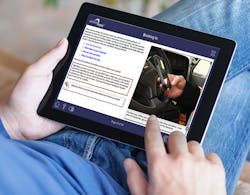CarriersEdge course helps drivers operate at slow speeds, in tight conditions
CarriersEdge has introduced a new course to help drivers safely handle one of the most hazard-laden aspects of their jobs -- maneuvering in tight, congested conditions while making deliveries.
The course, “Trip Planning, Parking and Deliveries,” gives drivers the tools and awareness they need to make deliveries without incident, the company noted.
“Driving safely on roads and highways is a major concern for the trucking industry, but some of the more frequent events occur when traveling at slower speeds,” said Jane Jazrawy, co-founder and CEO of CarriersEdge. “Vehicle and property damage arising from parking-lot collisions and fixed-object strikes are common occurrences, but there are preventive actions that drivers can take to minimize them.”
The course uses CarriersEdge’s mixture of text, graphics and photos, real-life illustrations, interactivity and short quizzes to deliver material to drivers in a clear, understandable fashion that helps them retain the information for use on the job.
CarriersEdge makes the latest course, and more than 70 other full-length and refresher courses, available any time and any place drivers have access to a computer or mobile device and an internet connection.
CarriersEdge explained it has also developed management tools that allow fleet managers to track driver training.
The complete 70-minute course can be taken as a whole or in three smaller modules. The Trip Planning segment teaches drivers how to research new delivery locations and identify potential pitfalls such as along the way, such as particularly busy intersections or low bridges. Trip planning can also help drivers avoid risky maneuvers such as U-turns and backing into traffic. The module also covers such topics as mirror check stations and the pros and cons of GPS systems.
In the module covering the trip itself and parking, drivers will learn the hazards of distraction and complacency that grow as they become more familiar with routes and destinations, as well as trailer inspection procedures, avoiding collisions in parking areas and fuel stops, turning methods and keeping pedestrians safe.
The third module covers hazards at the delivery site, and how successful, professional drivers can stay safe and project a positive image when on a customer’s property. Drivers taking the course will learn about common hazards at loading docks so they can reduce the chance of slip, trip and fall injuries to themselves or others as they unhook and prepare to unload.
Interested parties can try the course directly by contacting [email protected] or 905-530-2430.
